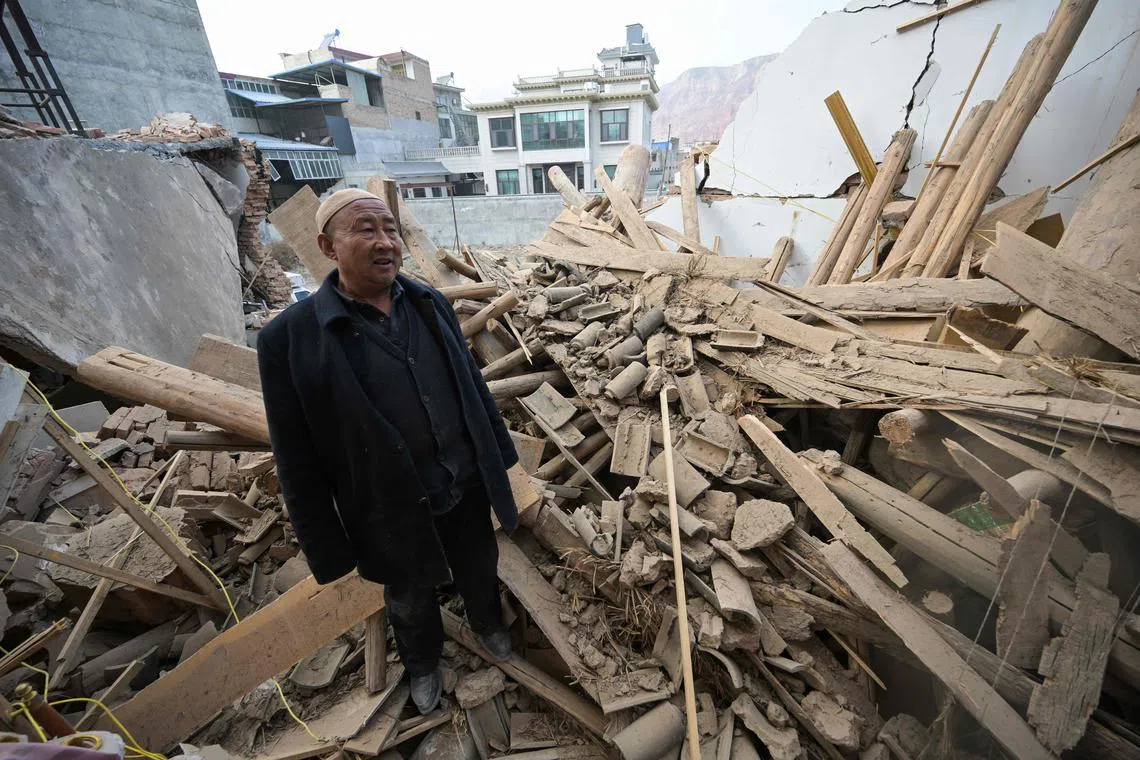A dozen still missing after China’s earthquake, 137 dead
Sign up now: Get insights on Asia's fast-moving developments
Follow topic:
BEIJING - A dozen people were still missing on Dec 21 after a magnitude-6.2 earthquake struck north-western Gansu
Chinese media reported that search and rescue work in Gansu ended at 3pm on Dec 19, about 15 hours after the disaster hit a remote and mountainous area near the border straddling Gansu and Qinghai provinces.
In Gansu, 115 people had been found dead
Neighbouring Qinghai saw its death toll rise to 22, with 198 injured and 12 missing as at 8.56pm on Dec 20.
More than 207,000 homes were wrecked and nearly 15,000 collapsed in Gansu, affecting more than 145,000 people.
Discussions online showed netizens curious about how quickly rescue efforts wrapped up in Gansu, with many suggesting sub-freezing temperatures were the main factor in shortening the “golden period” for finding survivors – typically 72 hours post-disaster.
People trapped under rubble exposed to prolonged temperatures of minus 10 deg C run the risk of rapid hypothermia and may be able to live for only five to 10 hours even if uninjured, local media reported, citing researchers.
“They would have been dead by the time they were found, even 24 hours is already too long. Outdoor temperatures are below minus 10 deg C,” a user on Chinese microblogging platform Weibo commented.
Some users on Weibo considered other factors such as the search area being not especially large, and that the people have been all accounted for, leading to rescue efforts ending in less than a day.

More than 207,000 homes were wrecked and nearly 15,000 collapsed in Gansu, affecting more than 145,000 people.
PHOTO: AFP
The earthquake jolted Jishishan county in Gansu a minute before midnight on Dec 18, sending many residents in the area out of homes into the cold in the dead of the night.
Survivors face uncertainty in the wintry months ahead without permanent shelter amid freezing temperatures.
Many of the affected families are Hui people, an ethnic minority mostly found in western Chinese provinces and regions such as Gansu, Ningxia and Shaanxi.
In Gansu’s Sibuzi village, villagers worried about the freezing winter.
“Many people escaped from their homes, some without socks, (some) just ran out barefoot. It’s extremely cold standing on the ground,” said Ms Zhou Habai, an ethnic Hui woman.
The 24-year-old, now staying in a makeshift tent after her home was destroyed, said some villagers have been gathering and burning firewood to keep warm.
About 60 per cent of the survivors have not received tents, 63-year-old Ye Zhiying from the same village told Reuters.
He said officials from the Communist Party had told them that the village would distribute tents by noon on Dec 21, and they would be set up in less than a week.
“Whether everyone can be accommodated or not, we don’t know,” said the Hui villager, who was given a tent on Dec 20.
Roads, power and water lines and agricultural production facilities have suffered damage, and the quake triggered landslides and mudslides that swept through villages in Qinghai’s Haidong, which reported the missing people.
REUTERS

